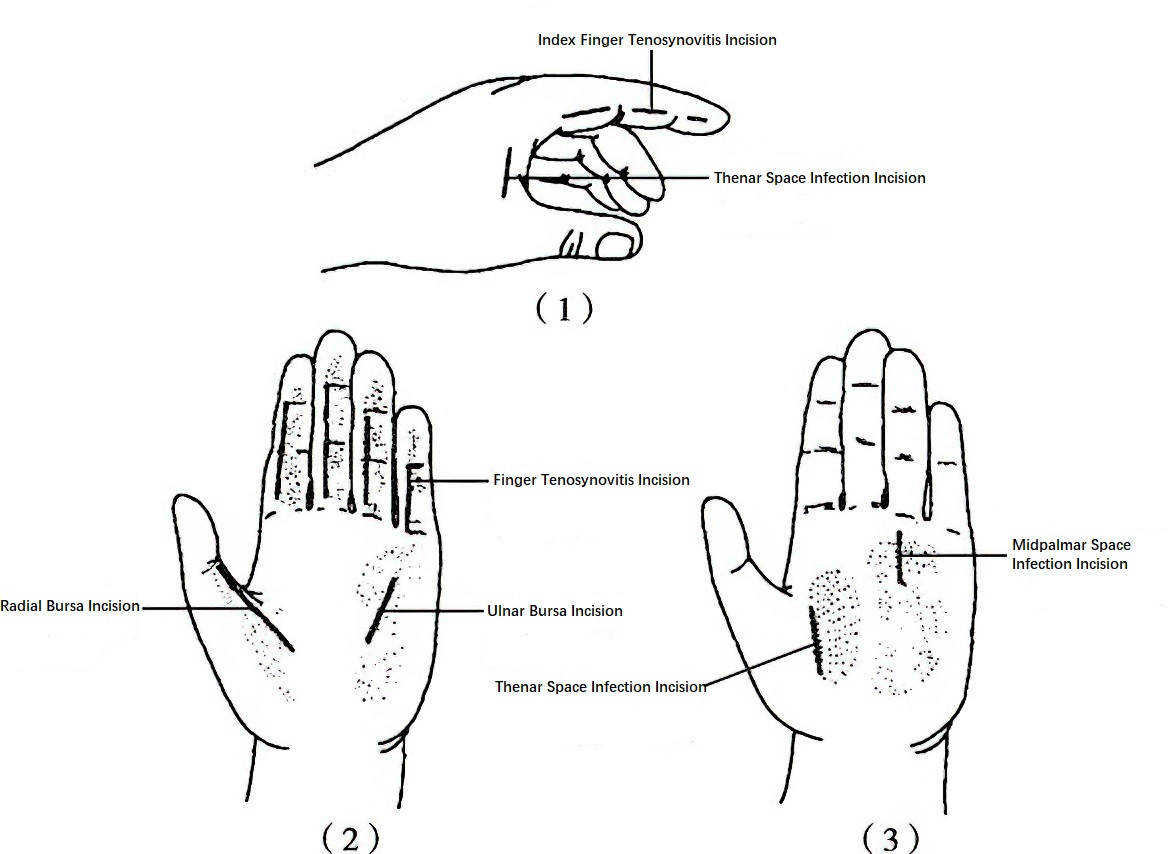Etiology and Pathology
Acute bacterial infection of the deep palmar spaces is primarily caused by the spread of finger tendon sheath infections or direct puncture injuries. The deep palmar spaces are located beneath the flexor tendons and bursae of the hand, with the fibrous structure formed by the palmar aponeurosis and its connection to the third metacarpal dividing this region into the midpalmar space and thenar space. Infections of the midpalmar space are often caused by the progression of tendon sheath infections from the middle and ring fingers, while infections of the thenar space typically arise from inflammation of the tendon sheath of the index finger.
Clinical Manifestations
Infections of the deep palmar spaces result in systemic symptoms such as fever, tachycardia, and elevated white blood cell counts. Secondary lymphadenopathy and pain in the cubital and axillary regions may also occur. Midpalmar space infections cause a bulging, tense, and pale appearance of the palm, with significant tenderness and dorsal hand edema. Passive extension of fingers leads to severe pain. In thenar space infections, there is hollowing of the deep palmar area, accompanied by swelling and tenderness over the thenar eminence and the web between the thumb and index finger. The index finger assumes a semi-flexed posture, the thumb is slightly abducted and flexed, and movements are restricted, with an inability to perform opposition.
Prevention and Treatment
Treatment of deep palmar space infections involves the use of high-dose, sensitive antibiotics. Early-stage local management is similar to that used for purulent finger infections. If no improvement is observed, surgical incision and drainage are performed promptly. For midpalmar space infections, longitudinal incisions can be made on the palmar side of the web between the middle and ring fingers, ensuring the incision does not extend beyond the distal palmar crease to avoid injury to the superficial palmar arch. An alternative approach involves a small transverse incision at the distal palmar crease opposite the ring finger to access the midpalmar space.

Figure 1 Surgical incisions for flexor tenosynovitis, bursitis, and deep palmar space infections
(1) Incisions for Palmar Tenosynovitis of the Index Finger and Thenar Space Infection
(2) Incisions for Finger Tenosynovitis and Radial/Ulnar Bursitis
(3) Incisions for Deep Palmar Space Infections
For thenar space infections, drainage can be achieved via an incision made at the most swollen or fluctuant area of the thenar eminence, taking care to avoid nerves, blood vessels, and tendons. Additional approaches include incisions in the web space between the thumb and index finger or a longitudinal incision along the radial side of the second metacarpal.